|
Scotland
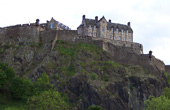
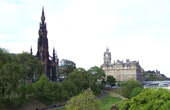 When we arrived in Edinburgh the incredible dominating presence of Edinburgh Castle was impossible to ignore. No other castle that we visited loomed so largely over a city. Other sights like the Scott Monument (right) also filled the skyline and gave the city a certain ancient, gritty feel. We first got our bearings straight with a few other sights around town. The third picture below is of St. Gile's Cathedral, sometimes regarded as the mother church of Presbyterianism.
When we arrived in Edinburgh the incredible dominating presence of Edinburgh Castle was impossible to ignore. No other castle that we visited loomed so largely over a city. Other sights like the Scott Monument (right) also filled the skyline and gave the city a certain ancient, gritty feel. We first got our bearings straight with a few other sights around town. The third picture below is of St. Gile's Cathedral, sometimes regarded as the mother church of Presbyterianism.




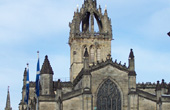

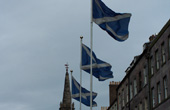
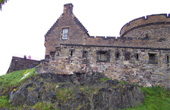
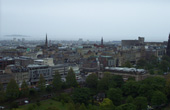 The following day we toured Edinburgh Castle. Allegedly human habitation of this site dates back to the 9th century BC. Today, though, most of the structures are relatively recent. The view from the walls is one of the most spectacular aspects of the castle. It doesn't take long to see why its position on the Castle Rock makes it such a strategic military base. Just outside the front gate are two statues, one of William Wallace and the other of Robert the Bruce.
The following day we toured Edinburgh Castle. Allegedly human habitation of this site dates back to the 9th century BC. Today, though, most of the structures are relatively recent. The view from the walls is one of the most spectacular aspects of the castle. It doesn't take long to see why its position on the Castle Rock makes it such a strategic military base. Just outside the front gate are two statues, one of William Wallace and the other of Robert the Bruce.
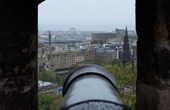



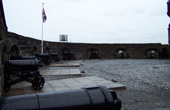

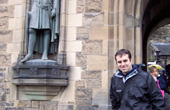
We next took a short bus ride to the golf mecca for many men in the world - the St. Andrews Old Course, the birthplace of golf (first and second below). We were surprised to find that we could walk around at will, including cutting across the 17th fairway. Even when the weather turned subpar, it didn't stop most golfers from taking advantage of a rare opportunity to play there. Thereafter we visited Rosslyn Chapel, a church made famous for its Templar and Masonic connections. This was most recently fictionalized in The Da Vinci Code.




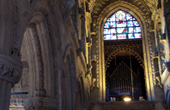

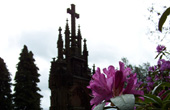
Because of time and travel constraints, we returned to Edinburgh and spent the remainder of our time in Scotland there. More pictures around town are below.
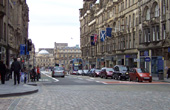

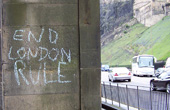



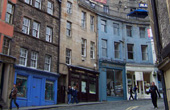
By this time Rick and I were both eager to get back to the States, but, somewhat on a whim, we decided to hike a large hill in the center of town - called Calton's Hill - because it appeared to have a number of interesting monuments, in addition to a great view. Our mild curiosity was rewarded with a wonderful view of Edinburgh and the surrounding area.


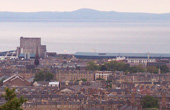

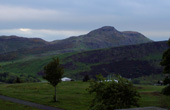

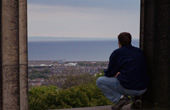
Final Thoughts
Although our trip was ending, I was extremely happy with the breadth and depth of our experiences on the British Isle. We had visited a wide variety of towns and cities, stayed with a wide variety of people, and immersed ourselves in British culture as best we could. That, I believe, is essential to fruitful travel.
While we were staying with Adrian Warnock in London he summed up the British-American relationship in a unique way. He likened it to a love-hate relationship two brothers would have when the younger one grows taller and becomes more successful in business than the older, wiser brother. The older brother may hate the younger one for his success and strength, but they're still brothers and will always love each other for it.
Following the two great world wars, Britain's global reach began to decline relative to other nations, most notably the United States. This prompted American Secretary of State Dean Acheson to say, "Great Britain has lost an empire and has not yet found a role." If we are to accept Adrian's analogy as true, I think then that Britain has found its role as a sage brother, friend and mentor to America.
|